Florida is home to diverse wildlife, and its wetlands and water bodies provide a haven for numerous duck species. A total of 27 distinct species of ducks can be found in the Sunshine State, each contributing to the rich tapestry of its avian biodiversity.
These waterfowl inhabit various habitats, from coastal marshes to inland lakes, creating a dynamic ecosystem that supports their diverse needs.
Florida’s geographic location and favorable climate make it an ideal destination for these feathered residents, attracting both migratory and resident species.
From the strikingly colorful Wood Duck to the iconic Mallard, the state offers birdwatchers and nature enthusiasts a remarkable opportunity to observe and appreciate the beauty and adaptability of these 27 species of ducks thriving in Florida’s diverse landscapes.
27 Ducks In Florida
In Florida, 27 species of ducks grace the diverse wetlands and water bodies.
From vibrant Wood Ducks to familiar Mallards, these waterfowl contribute to the state’s rich biodiversity, creating a captivating tapestry of avian life in its aquatic habitats.
1. Mallard
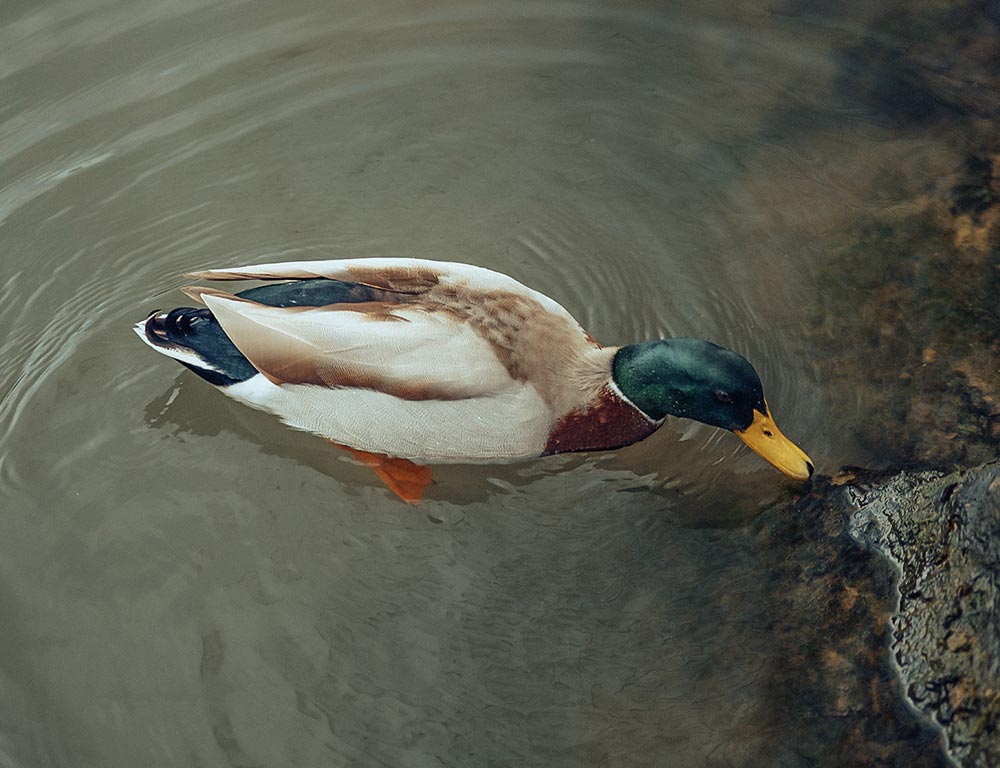
- Scientific Name: Anas platyrhynchos
- Life Span: 5-10 years
- Size: 20-28 inches
- Weight: 2-3 pounds
- Food: Omnivorous diet (seeds, aquatic plants, insects)
- Wingspan: 32-39 inches
- Status: Least Concern
The Mallard, with its distinctive iridescent green head, is a versatile and adaptable duck found across Florida’s wetlands.
With a lifespan of 5-10 years, Mallards exhibit a diverse diet, feeding on seeds, aquatic plants, and insects. Their omnivorous nature contributes to their resilience and widespread distribution.
Mallards are known for their social behavior, often forming flocks during migration. They are highly vocal, with distinctive quacks, and display intricate courtship rituals.
These ducks exhibit impressive wingspans of 32-39 inches, facilitating their agile flight. The Mallard’s status as “Least Concern” reflects its robust population.
2. Wood Duck
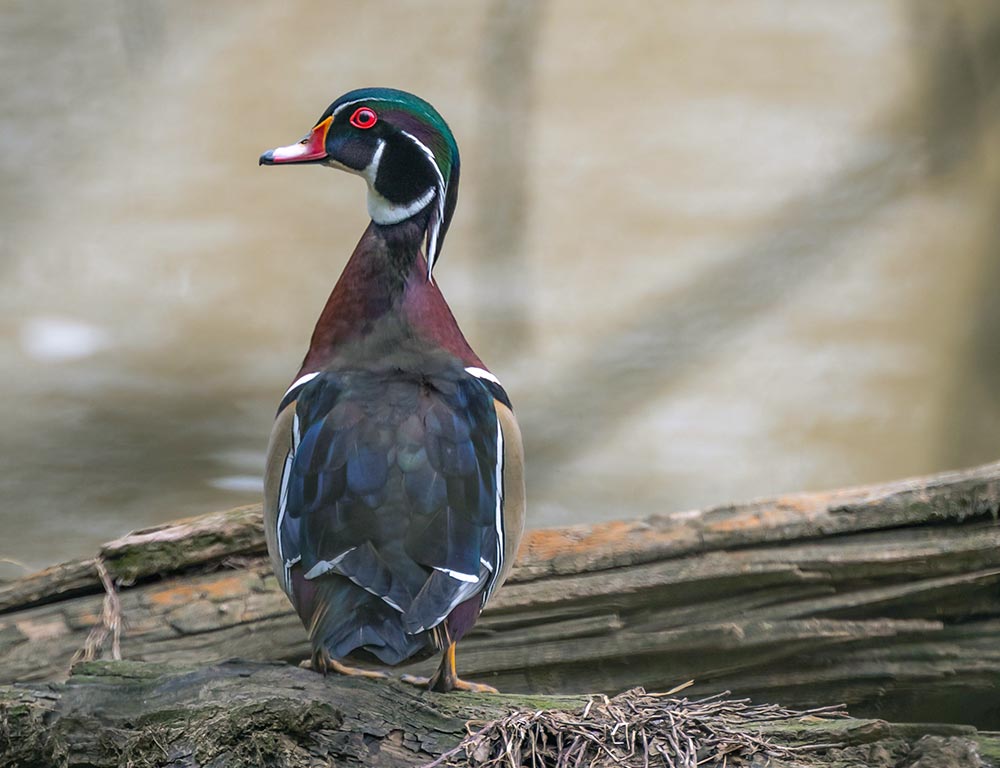
- Scientific Name: Aix sponsa
- Life Span: 2-5 years (wild), up to 15 years (captive)
- Size: 17-20 inches
- Weight: 1-2 pounds
- Food: Omnivorous (acorns, seeds, insects, aquatic plants)
- Wingspan: 26-29 inches
- Status: Least Concern
The Wood Duck, recognized for its stunning iridescence and elaborate plumage, graces Florida’s wetlands with its vibrant presence.
With a lifespan of 2-5 years in the wild and up to 15 years in captivity, Wood Ducks are renowned for their beauty and adaptability. Their omnivorous diet includes acorns, seeds, insects, and aquatic plants, underscoring their versatility.
Wood Ducks are cavity nesters, often utilizing tree hollows for nesting sites. Their nesting habits contribute to their unique lifestyle, allowing them to thrive in various habitats, from swamps to wooded areas.
During the breeding season, males display striking courtship behaviors, showcasing their colorful plumage to attract mates.
With a wingspan of 26-29 inches, Wood Ducks exhibit agile flight, navigating through densely vegetated areas. Despite their status as “Least Concern,” habitat loss threatens their populations.
3. Florida Mottled Duck
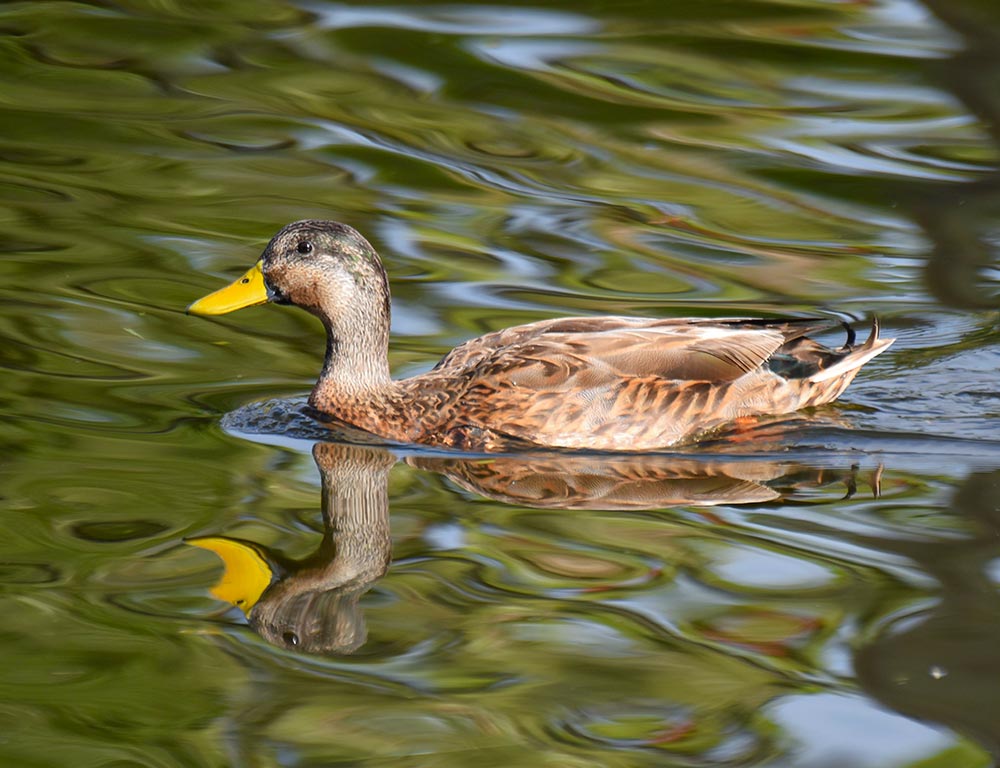
- Scientific Name: Anas fulvigula fulvigula
- Life Span: 3-5 years
- Size: 20-22 inches
- Weight: 1.5-2.5 pounds
- Food: Omnivorous (aquatic plants, seeds, insects)
- Wingspan: 28-32 inches
- Status: Near Threatened
The Florida Mottled Duck, a unique subspecies of the Mottled Duck, is an iconic resident of Florida’s wetlands.
With a life span of 3-5 years, these ducks prefer freshwater habitats, including marshes and ponds. Their omnivorous diet comprises aquatic plants, seeds, and insects, showcasing adaptability to varied environments.
These ducks are known for their distinctive mottled brown plumage, offering excellent camouflage in their preferred habitats.
With a wingspan of 28-32 inches, they possess moderate agility in flight. The Florida Mottled Duck faces conservation challenges and is classified as “Near Threatened” due to habitat loss and hybridization with Mallards.
Preserving their unique genetic lineage and protecting their wetland habitats are crucial for ensuring the survival of this distinctive Florida waterfowl.
4. Black-bellied Whistling Duck
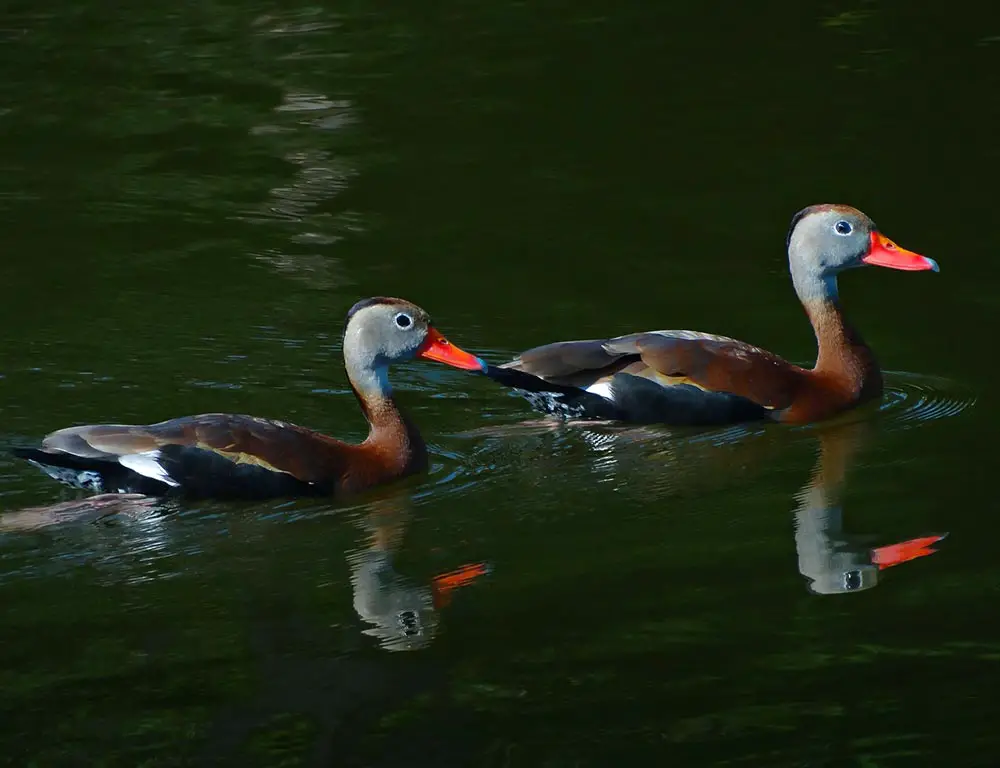
- Scientific Name: Dendrocygna autumnalis
- Life Span: 5-8 years
- Size: 19-23 inches
- Weight: 1.2-2.4 pounds
- Food: Herbivorous (seeds, plants, insects)
- Wingspan: 26-29 inches
- Status: Least Concern
With its striking appearance and distinctive calls, the Black-bellied Whistling Duck is a charismatic resident of Florida’s wetlands.
With a life span of 5-8 years, these ducks are known for their herbivorous diet, feeding on seeds, plants, and insects.
Their unique vocalizations, resembling high-pitched whistles, add to the ambiance of their habitats. These ducks are recognized by their pink bills, long necks, and contrasting black bellies. Their sociable nature is evident in large, noisy flocks.
With a wingspan of 26-29 inches, Black-bellied Whistling Ducks are agile fliers, often seen in V-shaped formations during migration. Classified as “Least Concern,” these ducks benefit from preserving wetland habitats.
Conservation efforts to protect these vital ecosystems are essential to sustaining the populations of Black-bellied Whistling Ducks and maintaining their vibrant presence in Florida’s avian community.
5. Blue-winged Teal
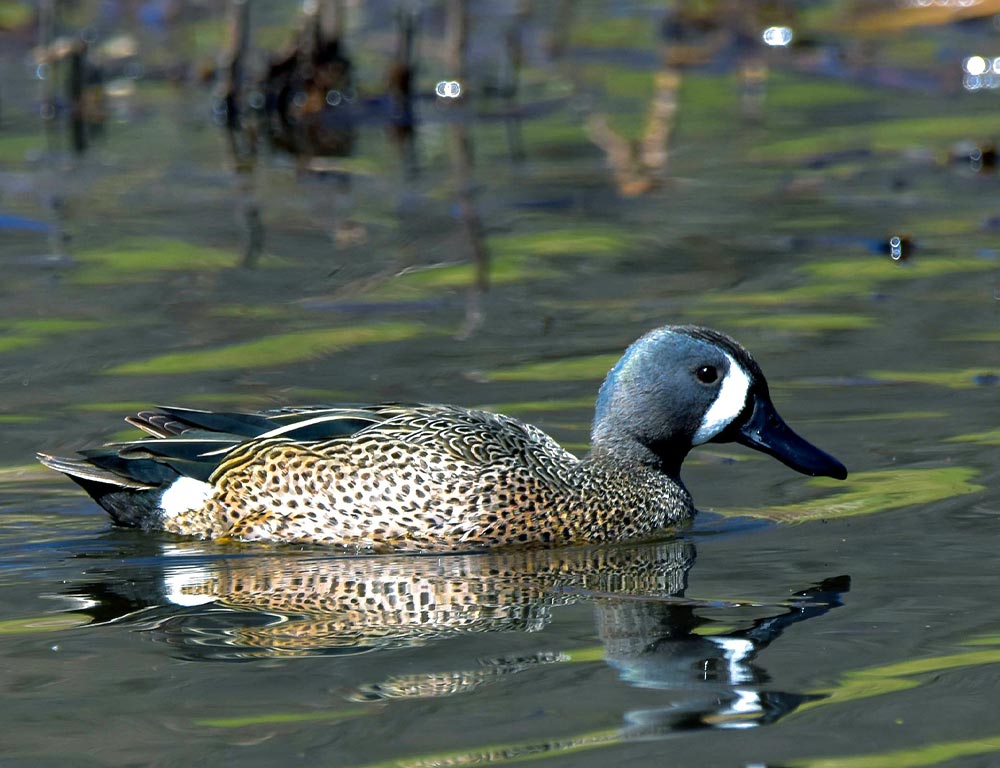
- Scientific Name: Spatula discors
- Life Span: 2-4 years
- Size: 14-16 inches
- Weight: 0.5-1 pound
- Food: Omnivorous (seeds, aquatic invertebrates)
- Wingspan: 20-23 inches
- Status: Least Concern
The Blue-winged Teal, known for its distinctive markings, is a migratory visitor to Florida’s wetlands. With a life span of 2-4 years, these ducks exhibit a diverse diet, feeding on seeds and aquatic invertebrates.
Their striking plumage, featuring blue wing patches, sets them apart in the avian landscape.
Blue-winged Teals are agile fliers with a wingspan of 20-23 inches, making them well-suited for their migratory journeys. They favor shallow wetlands, where they forage for food with their dabbling behavior.
During the breeding season, males display vibrant courtship displays to attract females. Classified as “Least Concern,” the Blue-winged Teal benefits from the preservation of both breeding and wintering habitats.
Wetland conservation efforts play a crucial role in maintaining the ecological balance necessary for the survival of these visually striking ducks in Florida.
6. Fulvous Whistling-Duck
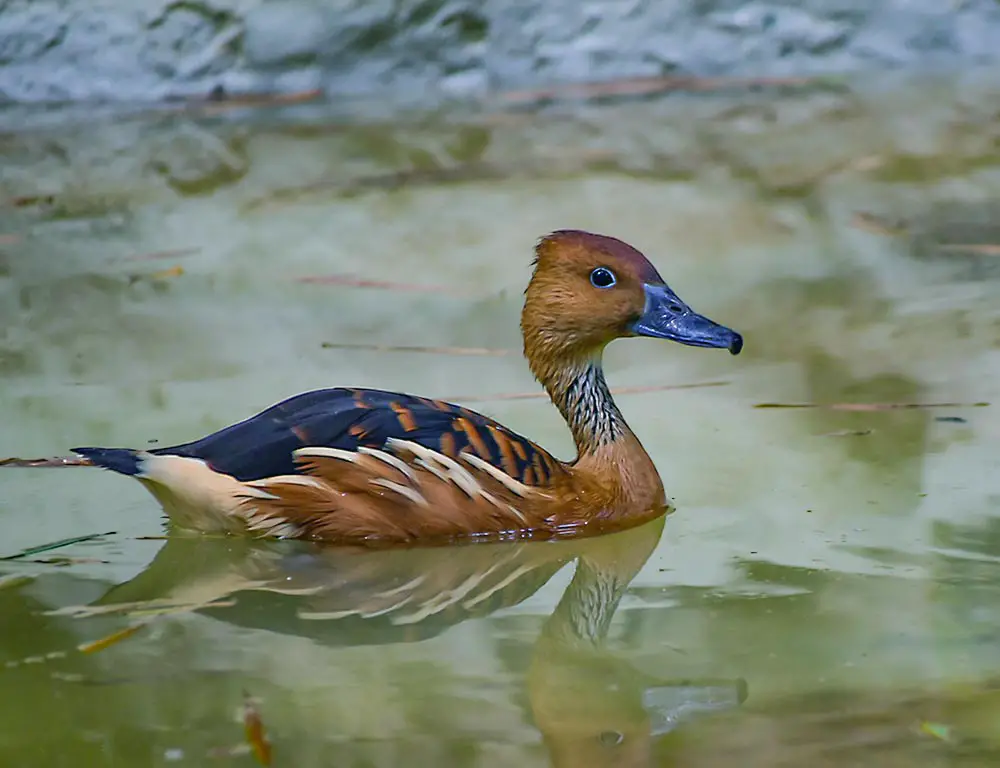
- Scientific Name: Dendrocygna bicolor
- Life Span: 5-8 years
- Size: 18-22 inches
- Weight: 1.5-2 pounds
- Food: Omnivorous (seeds, aquatic plants, invertebrates)
- Wingspan: 31-33 inches
- Status: Least Concern
With its distinctive reddish-brown plumage and unique vocalizations, the Fulvous Whistling-Duck graces Florida’s wetlands.
With a life span of 5-8 years, these ducks have an omnivorous diet, consuming seeds, aquatic plants, and invertebrates. Their high-pitched whistles add a melodic element to their habitats.
These ducks prefer marshes and ponds, displaying a preference for shallow water. Their wingspan of 31-33 inches facilitates their flight over varied landscapes.
Fulvous whistling ducks are social birds, often seen in large flocks during the breeding season.
Classified as “Least Concern,” these ducks benefit from preserving wetland habitats, ensuring their continued presence in Florida’s diverse avian community.
7. Red-breasted Merganser
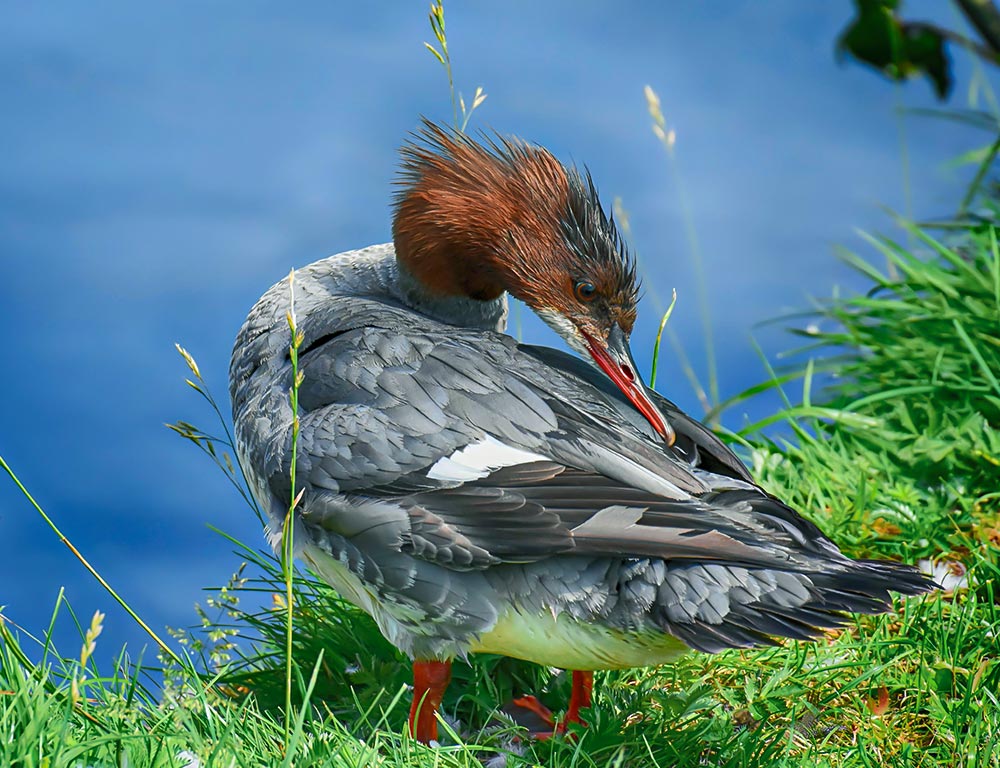
- Scientific Name: Mergus serrator
- Life Span: 5-9 years
- Size: 22-28 inches
- Weight: 1.5-3 pounds
- Food: Carnivorous (fish, crustaceans, aquatic insects)
- Wingspan: 26-33 inches
- Status: Least Concern
The Red-breasted Merganser, distinguished by its striking plumage and serrated bill, is a captivating waterfowl species in Florida.
Red-breasted Mergansers are skilled divers, using their powerful wings to navigate underwater. Their wingspan ranges from 26-33 inches, allowing for swift flight over bodies of water.
During the breeding season, males display intricate courtship behaviors, showcasing their vibrant red plumage. As “Least Concern,” the Red-breasted Merganser benefits from the availability of suitable nesting sites and healthy aquatic ecosystems.
Conservation efforts focused on preserving coastal habitats are crucial for maintaining the populations of these captivating ducks along Florida’s shorelines.
8. Lesser Scaup
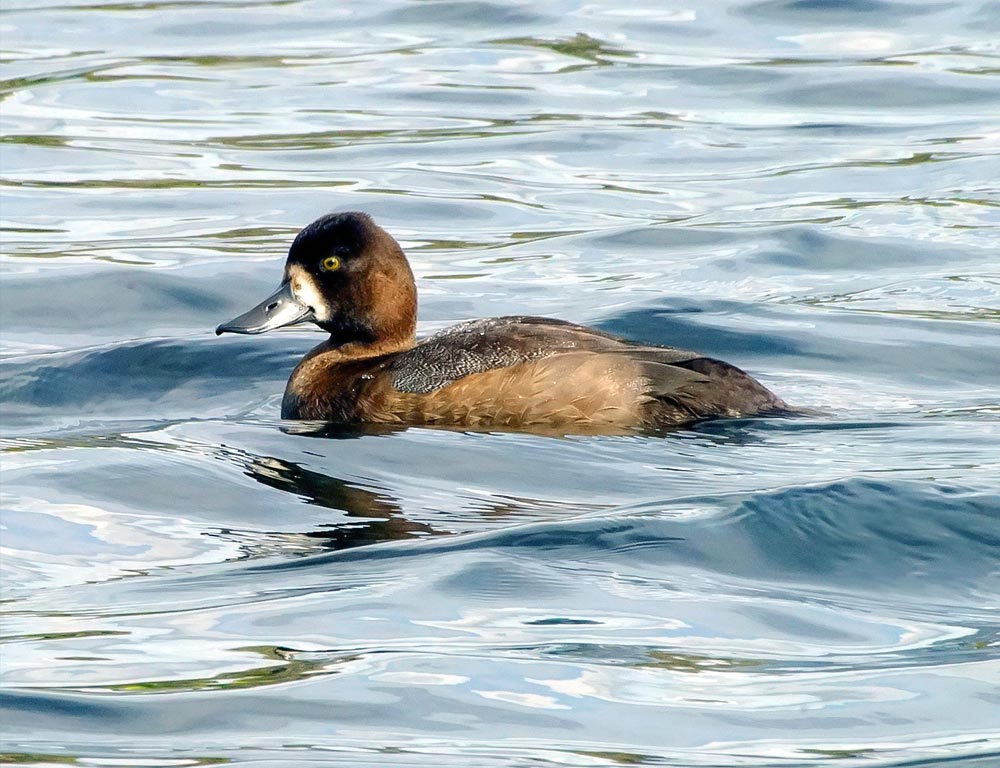
- Scientific Name: Aythya affinis
- Life Span: 10-14 years
- Size: 14-18 inches
- Weight: 1-2 pounds
- Food: Omnivorous (aquatic plants, invertebrates, small fish)
- Wingspan: 22-24 inches
- Status: Least Concern
The Lesser Scaup, a medium-sized diving duck, is a common winter visitor to Florida’s lakes and coastal waters.
With a life span of 10-14 years, these ducks maintain an omnivorous diet, consuming aquatic plants, invertebrates, and small fish. Their adaptability allows them to thrive in a range of aquatic habitats.
Lesser Scaups are known for their distinctive blue bills and yellow eyes. Their wingspan of 22-24 inches supports their agile flight, facilitating their migrations across vast distances.
These ducks exhibit social behaviors, often forming large flocks during the non-breeding season. As “Least Concern,” the Lesser Scaup benefits from the preservation of both breeding and wintering habitats.
9. Ring-necked Duck
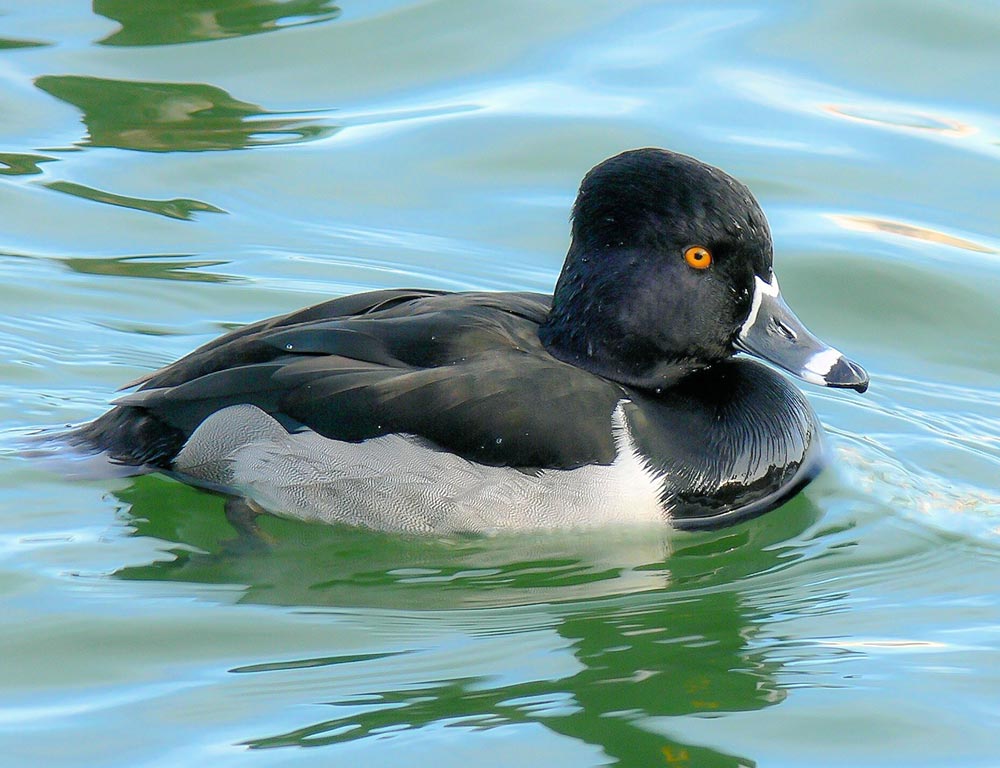
- Scientific Name: Aythya collaris
- Life Span: 12-15 years
- Size: 14-18 inches
- Weight: 1-2 pounds
- Food: Omnivorous (aquatic plants, invertebrates, small fish)
- Wingspan: 24-29 inches
- Status: Least Concern
The Ring-necked Duck, named for a subtle ring on its neck, is a migratory waterfowl species that frequents Florida’s wetlands.
With a life span of 12-15 years, these ducks maintain an omnivorous diet, consuming aquatic plants, invertebrates, and small fish. Their adaptability allows them to thrive in a range of freshwater habitats.
These ducks are characterized by distinctive white rings around their bills and striking plumage. With a wingspan of 24-29 inches, they display agility in both flight and diving.
Ring-necked Ducks are known for their diving behavior, disappearing beneath the water’s surface to forage for food. As “Least Concern,” Ring-necked Ducks benefit from preserving wetland habitats.
Conservation efforts to protect their breeding and wintering grounds are crucial for ensuring the continued presence of these captivating waterfowl in Florida’s diverse ecosystems.
10. Redhead
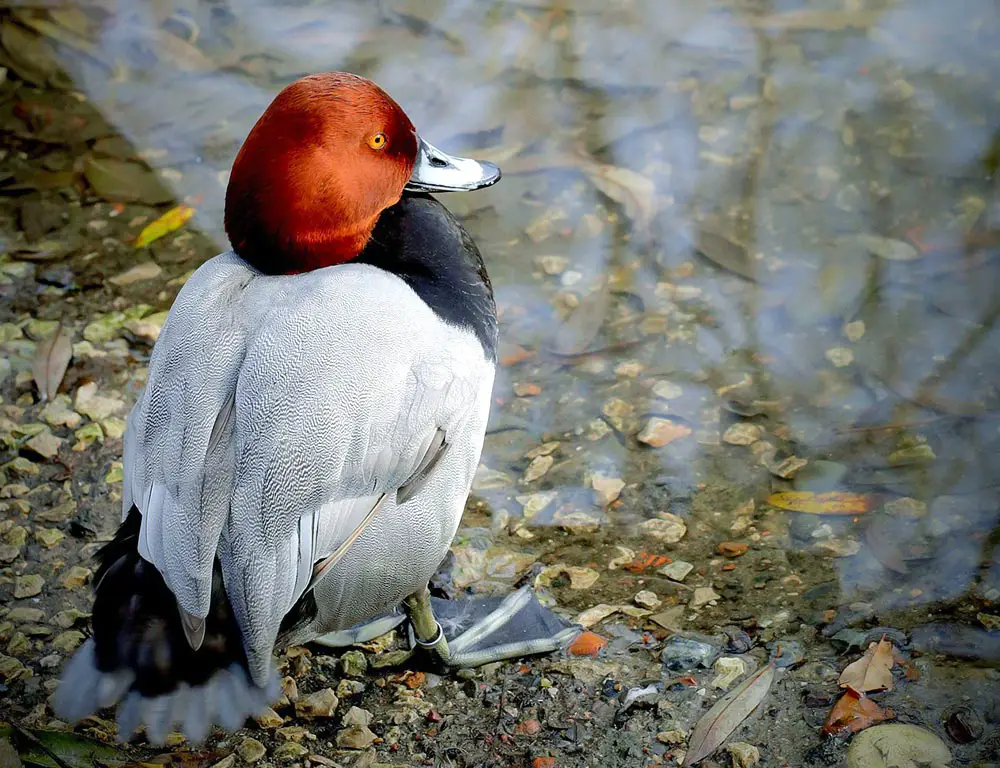
- Scientific Name: Aythya Americana
- Life Span: 14-18 years
- Size: 16-22 inches
- Weight: 2-3 pounds
- Food: Omnivorous (aquatic plants, invertebrates, small fish)
- Wingspan: 24-29 inches
- Status: Least Concern
The Redhead, a striking diving duck, is a captivating resident of Florida’s wetlands. With 14-18 years of life, these ducks maintain an omnivorous diet, feeding on aquatic plants, invertebrates, and small fish.
Their distinctively rounded heads and bright red plumage make them easily identifiable in the avian landscape.
Redheads are skilled divers, using their powerful wings to navigate underwater. As “Least Concern,” Redheads benefit from preserving wetland habitats.
Their wingspan of 24-29 inches enables swift flight over bodies of water. During the breeding season, males showcase vibrant courtship displays, emphasizing their striking appearance.
11. Northern Shoveler
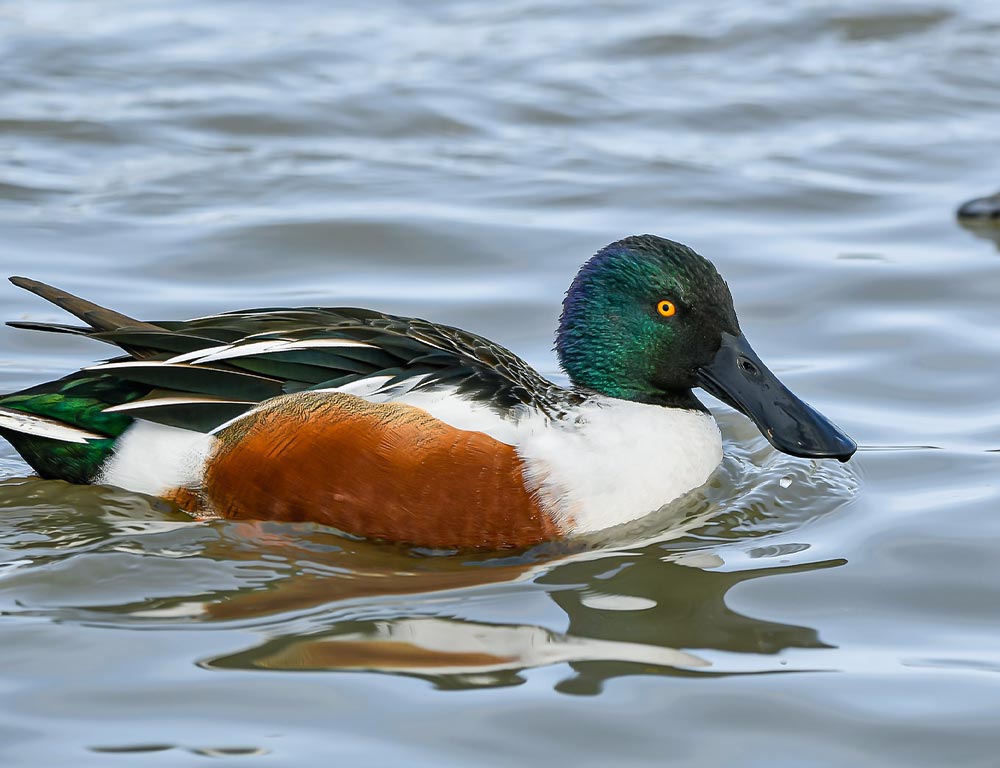
- Scientific Name: Anas clypeata
- Life Span: 5-10 years
- Size: 18-23 inches
- Weight: 1-2 pounds
- Food: Omnivorous (seeds, aquatic invertebrates)
- Wingspan: 25-29 inches
- Status: Least Concern
The Northern Shoveler, characterized by its distinctive large spatula-shaped bill, is a remarkable duck species found in Florida’s wetlands.
With a life span of 5-10 years, these ducks have an omnivorous diet, specializing in seeds and aquatic invertebrates. Their unique bill enables efficient filter-feeding in shallow waters.
Northern Shovelers are highly adaptable, inhabiting various wetland habitats. Their wingspan ranges from 25-29 inches, allowing for agile flight. Males use their striking plumage and distinctive bill during courtship displays to attract mates.
Conservation efforts to maintain suitable nesting sites and protect wetland ecosystems are crucial for ensuring the continued presence of these fascinating ducks in Florida.
12. Ruddy Duck
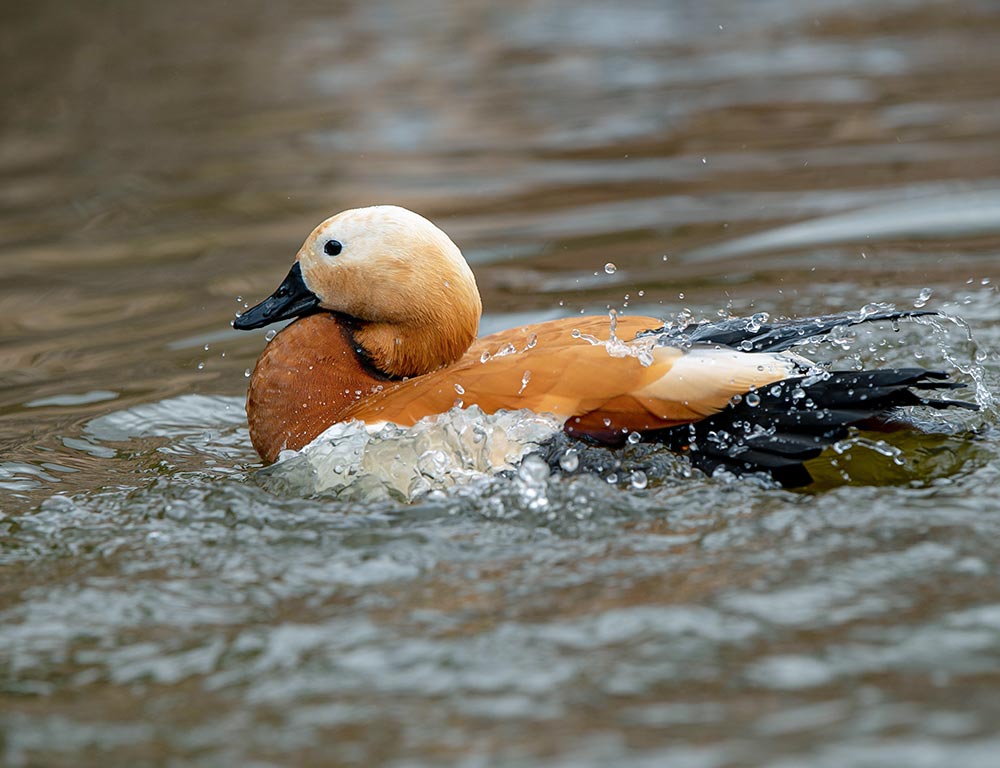
- Scientific Name: Oxyura jamaicensis
- Life Span: 2-5 years
- Size: 13-17 inches
- Weight: 1-2 pounds
- Food: Omnivorous (aquatic plants, invertebrates)
- Wingspan: 18-22 inches
- Status: Least Concern
The Ruddy Duck, known for its compact size and distinctive stiff tail, is a charming waterfowl species inhabiting Florida’s wetlands.
With a life span of 2-5 years, these ducks maintain an omnivorous diet, feeding on aquatic plants and invertebrates. Their unique courtship displays, involving rapid head-bobbing and tail-raising, add to their allure.
Ruddy Ducks prefer marshes and ponds with dense vegetation for nesting and foraging. Their wingspan of 18-22 inches supports their agile flight, especially during migration.
During breeding, males showcase vibrant blue bills and striking plumage to attract females. As “Least Concern,” Ruddy Ducks benefit from preserving wetland habitats.
13. Greater Scaup
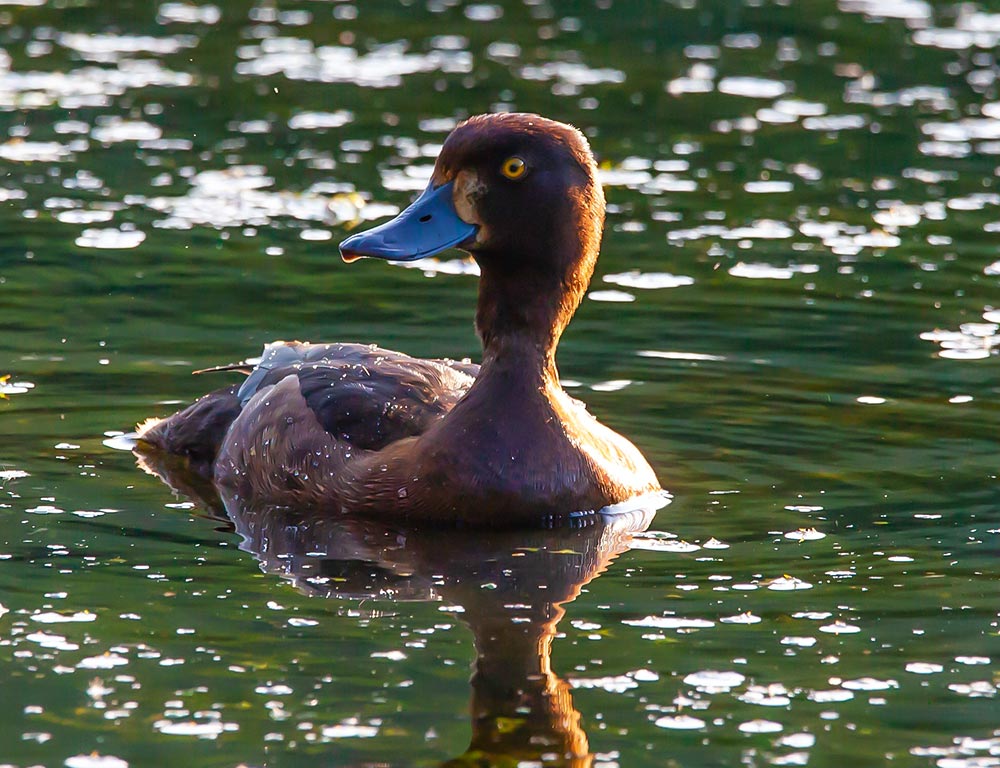
- Scientific Name: Aythya marila
- Life Span: 10-14 years
- Size: 16-20 inches
- Weight: 2-3 pounds
- Food: Omnivorous (aquatic plants, invertebrates, small fish)
- Wingspan: 28-33 inches
- Status: Least Concern
The Greater Scaup, a medium to large diving duck, is a migratory visitor to Florida’s coastal waters and lakes.
With a life span of 10-14 years, these ducks maintain an omnivorous diet, consuming aquatic plants, invertebrates, and small fish. Their distinctive blue bills and yellow eyes make them easily identifiable.
Greater Scaups are skilled divers, using their powerful wings to navigate underwater. Their wingspan ranges from 28-33 inches, allowing for swift flight over bodies of water.
Conservation efforts aimed at maintaining the health of coastal ecosystems and freshwater habitats are crucial for ensuring the continued presence of these impressive diving ducks in Florida’s diverse wetland environments.
14. Canvasback
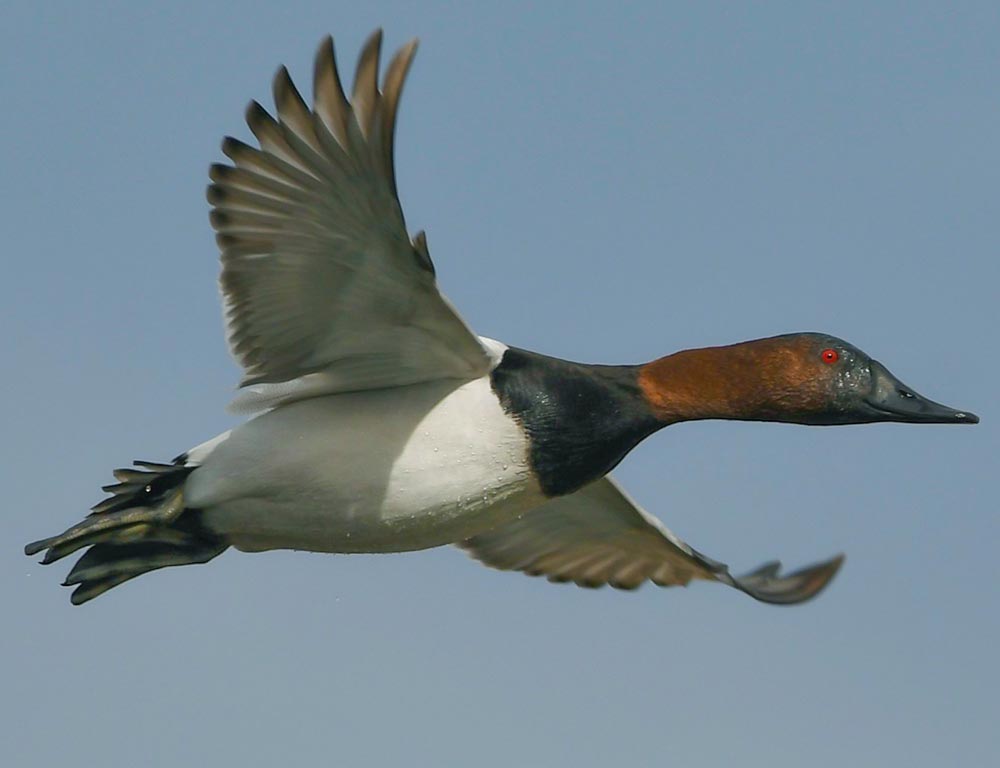
- Scientific Name: Aythya valisineria
- Life Span: 10-15 years
- Size: 19-22 inches
- Weight: 2-3 pounds
- Food: Omnivorous (aquatic plants, invertebrates, small fish)
- Wingspan: 30-35 inches
- Status: Least Concern
The Canvasback, renowned for its distinctive red head and sleek profile, is a notable diving duck inhabiting Florida’s wetlands.
These ducks maintain an omnivorous diet, consuming aquatic plants, invertebrates, and small fish. Their preference for large, open bodies of water makes them an iconic presence in lakes and coastal habitats.
Canvasbacks are skilled divers, using their powerful wings to navigate beneath the water’s surface. Their wingspan of 30-35 inches allows for swift and agile flight.
Conservation efforts aimed at maintaining the health of freshwater ecosystems are crucial for ensuring the continued presence of these elegant diving ducks in Florida’s diverse wetland environments.
15. Hooded Merganser
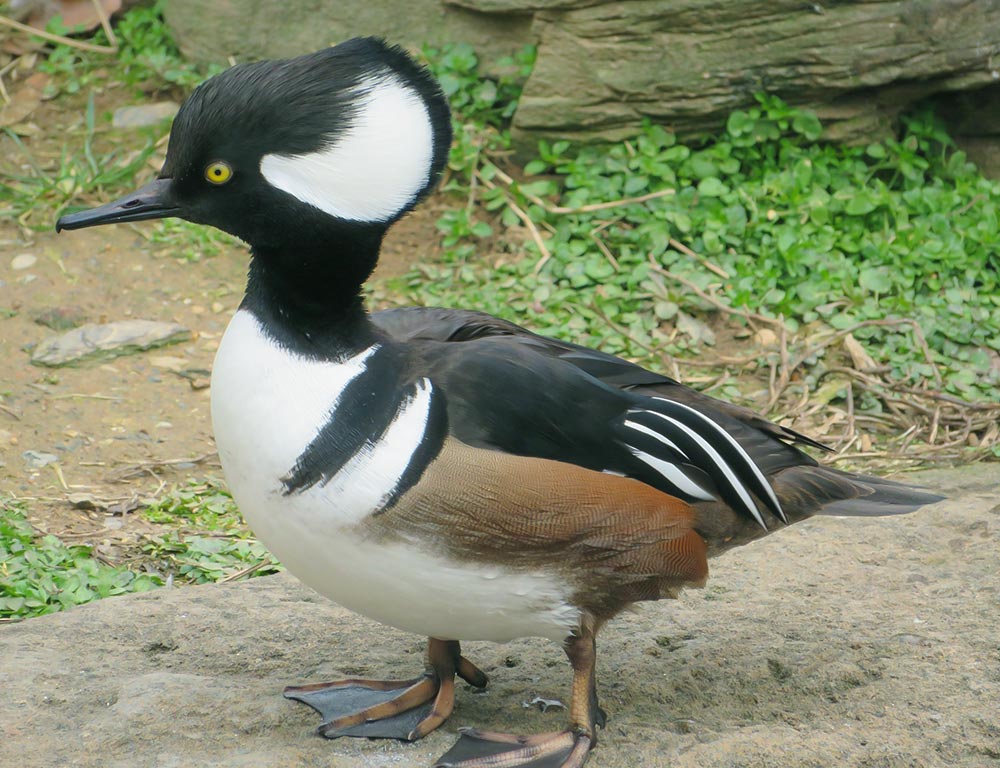
- Scientific Name: Lophodytes cucullatus
- Life Span: 5-12 years
- Size: 16-22 inches
- Weight: 1-2 pounds
- Food: Omnivorous (fish, crustaceans, aquatic insects)
- Wingspan: 22-27 inches
- Status: Least Concern
With its distinctive crest and captivating plumage, the Hooded Merganser is a charismatic waterfowl species in Florida’s wetlands.
With a life span of 5-12 years, these ducks have a carnivorous diet, specializing in fish, crustaceans, and aquatic insects. Their preference for wooded habitats and smaller water bodies sets them apart in the avian landscape.
Hooded Mergansers are skilled divers and foragers, using their keen eyesight to locate prey beneath the water’s surface.
Their wingspan of 22-27 inches facilitates agile flight, especially in wooded areas. During the breeding season, males display elaborate courtship behaviors, showcasing their striking crests.
16. Eurasian Wigeon
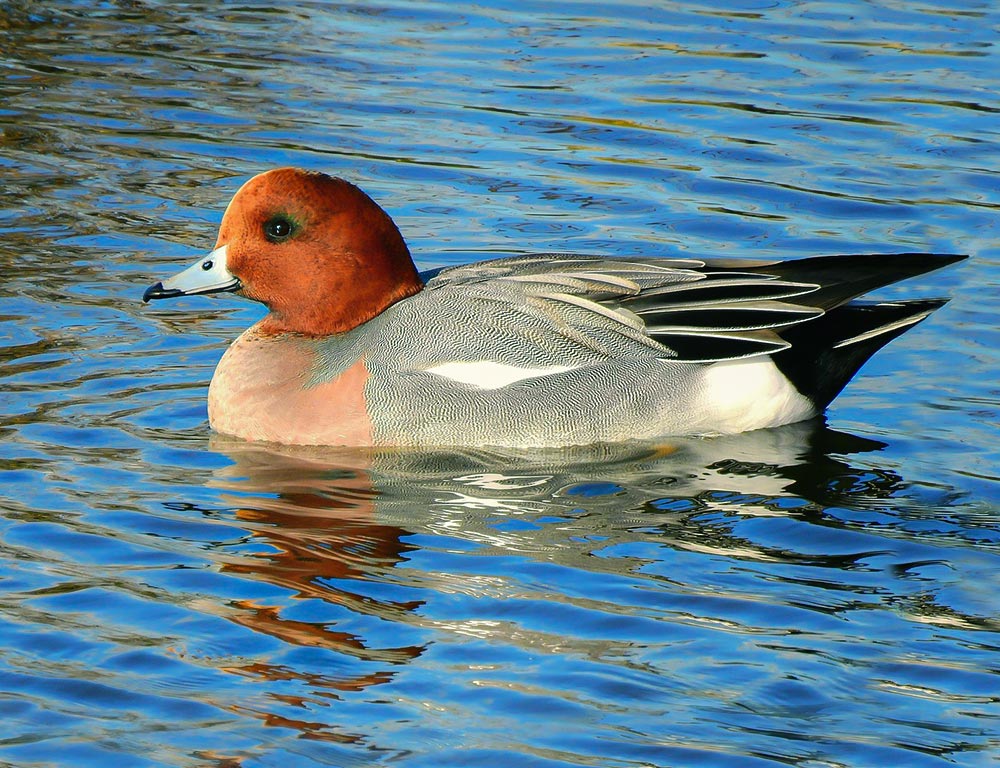
- Scientific Name: Mareca Penelope
- Life Span: 5-10 years
- Size: 17-21 inches
- Weight: 1-2 pounds
- Food: Herbivorous (grasses, aquatic plants)
- Wingspan: 28-31 inches
- Status: Least Concern
The Eurasian Wigeon, a migratory dabbling duck, graces Florida’s wetlands with its subtle elegance.
With a life span of 5-10 years, these ducks maintain a herbivorous diet, feeding on grasses and aquatic plants. Their distinctive markings, including a creamy facial stripe, make them easily identifiable.
Eurasian Wigeons are adaptable, utilizing a variety of wetland habitats for foraging and breeding. Their wingspan of 28-31 inches supports their agile flight during migrations.
Conservation efforts focused on maintaining the health of wetland ecosystems are crucial for ensuring the continued presence of these graceful dabbling ducks in Florida’s diverse avian landscapes.
17. Northern Pintail
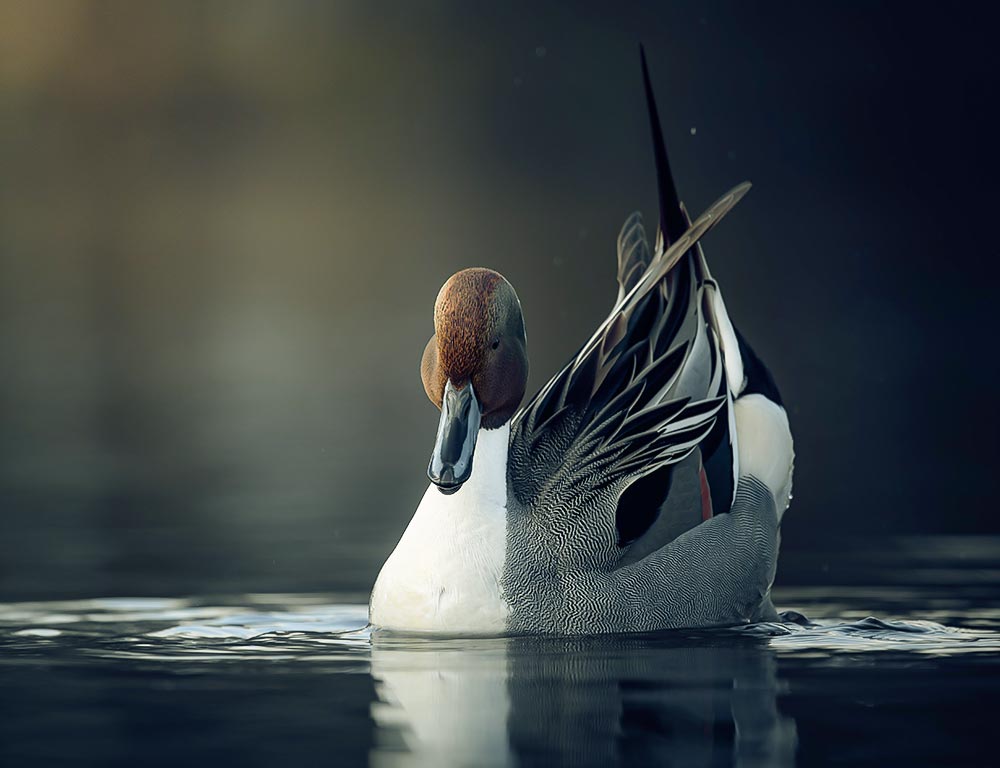
- Scientific Name: Anas acuta
- Life Span: 2-5 years
- Size: 20-30 inches
- Weight: 1-2 pounds
- Food: Omnivorous (seeds, aquatic invertebrates)
- Wingspan: 23-28 inches
- Status: Least Concern
The Northern Pintail, characterized by its long, elegant neck and pointed tail, is a migratory waterfowl species found in Florida’s wetlands.
With a life span of 2-5 years, these ducks maintain an omnivorous diet, feeding on seeds and aquatic invertebrates. Their streamlined bodies and distinctive markings make them captivating in freshwater and coastal habitats.
Their adaptability allows them to thrive in a variety of wetland environments. During the breeding season, males showcase striking plumage and engage in elaborate courtship displays to attract females.
Conservation efforts to protect wetland ecosystems and maintain suitable nesting sites are crucial for ensuring the continued presence of these elegant dabbling ducks in Florida.
18. Gadwall
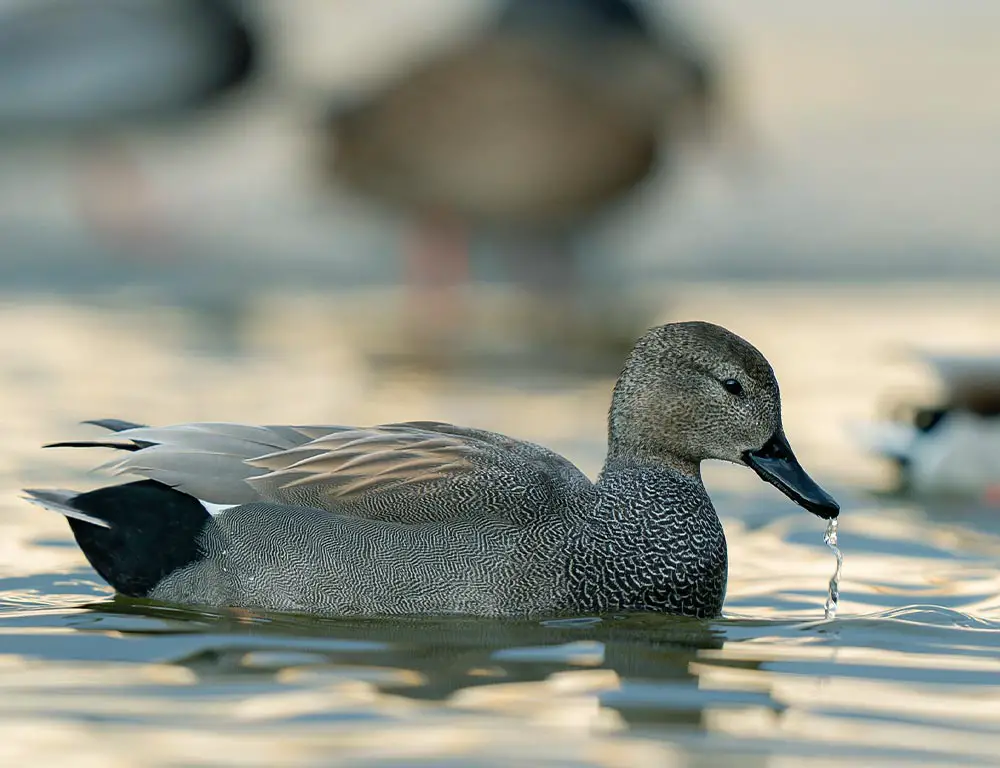
- Scientific Name: Mareca strepera
- Life Span: 7-10 years
- Size: 18-22 inches
- Weight: 2-3 pounds
- Food: Omnivorous (seeds, aquatic invertebrates)
- Wingspan: 32-34 inches
- Status: Least Concern
The Gadwall, with its subtle beauty and mottled plumage, is a versatile dabbling duck commonly found in Florida’s wetlands. With a life span of 7-10 years, these ducks maintain an omnivorous diet, feeding on seeds and aquatic invertebrates.
Their preference for various wetland habitats makes them a common sight in both inland and coastal environments.
Gadwalls are known for their adaptable nature, thriving in diverse ecosystems. Their wingspan of 32-34 inches supports their agile flight during both local movements and migrations.
During the breeding season, males display intricate courtship behaviors, emphasizing their understated elegance.
19. Long-tailed Duck
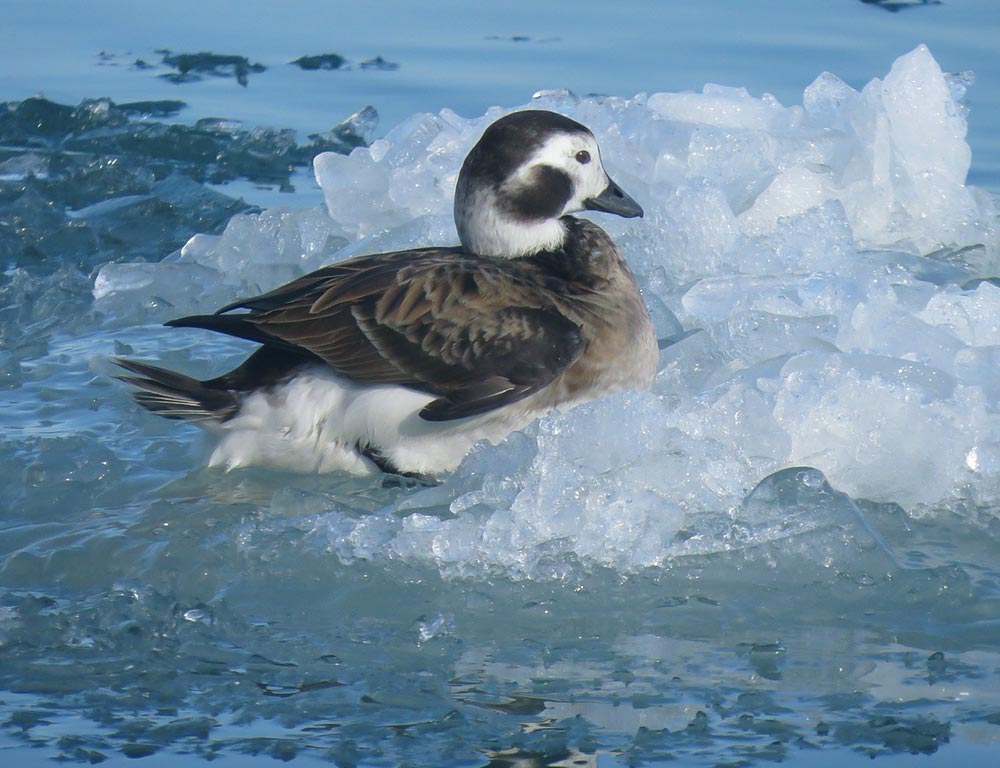
- Scientific Name: Clangula hyemalis
- Life Span: 5-10 years
- Size: 18-24 inches
- Weight: 1-2 pounds
- Food: Omnivorous (aquatic invertebrates, small fish, mollusks)
- Wingspan: 24-28 inches
- Status: Least Concern
The Long-tailed Duck, distinguished by its striking plumage and lengthy tail feathers, is an Arctic-breeding waterfowl that occasionally visits Florida’s coastal waters.
With a life span of 5-10 years, these ducks maintain an omnivorous diet, predominantly feeding on aquatic invertebrates, small fish, and mollusks.
During the breeding season, males display vibrant breeding plumage and exceptionally long central tail feathers, creating an iconic appearance. Their wingspan of 24-28 inches allows for agile flight during migrations.
Conservation efforts focused on protecting these crucial environments are vital for ensuring the continued presence of these captivating ducks, even as occasional visitors, in Florida’s coastal areas.
20. Cinnamon Teal
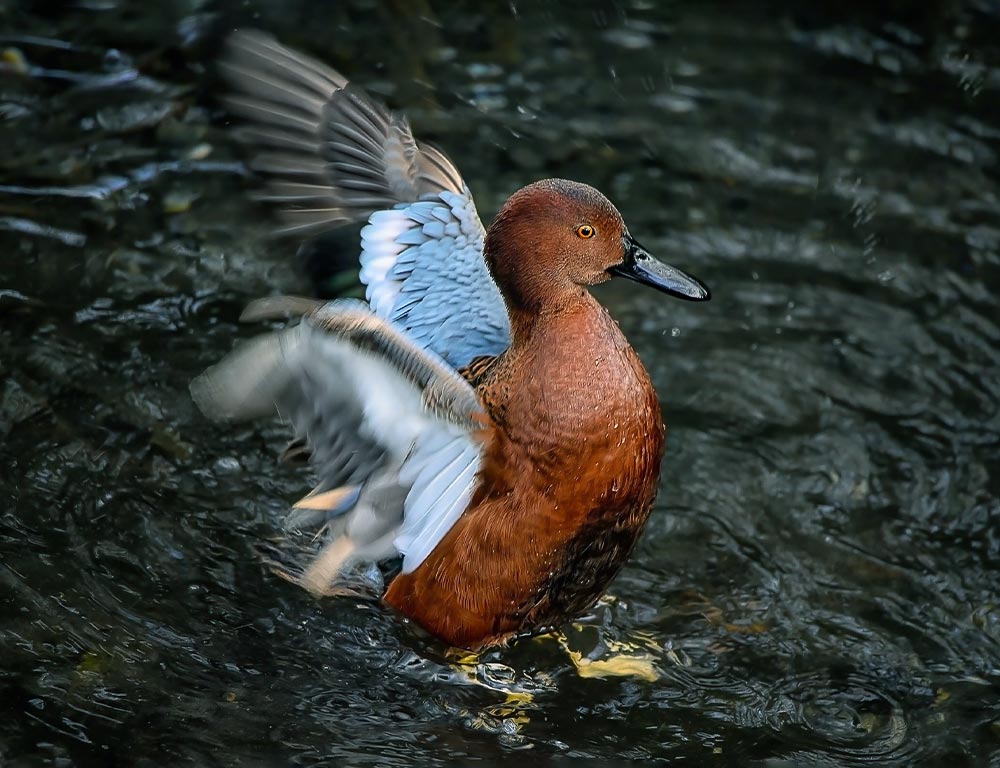
- Scientific Name: Anas cyanoptera
- Life Span: 5-10 years
- Size: 14-16 inches
- Weight: 0.5-1 pound
- Food: Omnivorous (seeds, aquatic invertebrates)
- Wingspan: 22-24 inches
- Status: Least Concern
With its distinctive cinnamon-colored plumage, the Cinnamon Teal is a dabbling duck that occasionally graces Florida’s wetlands. With a life span of 5-10 years, these ducks maintain an omnivorous diet, feeding on seeds and aquatic invertebrates.
Their wingspan of 22-24 inches facilitates agile flight during migrations. They prefer shallow water habitats, such as ponds and marshes, for foraging and breeding.
Conservation efforts focused on protecting both breeding and wintering grounds are crucial for ensuring the continued presence of these visually appealing ducks in Florida’s diverse ecosystems.
21. American Wigeon
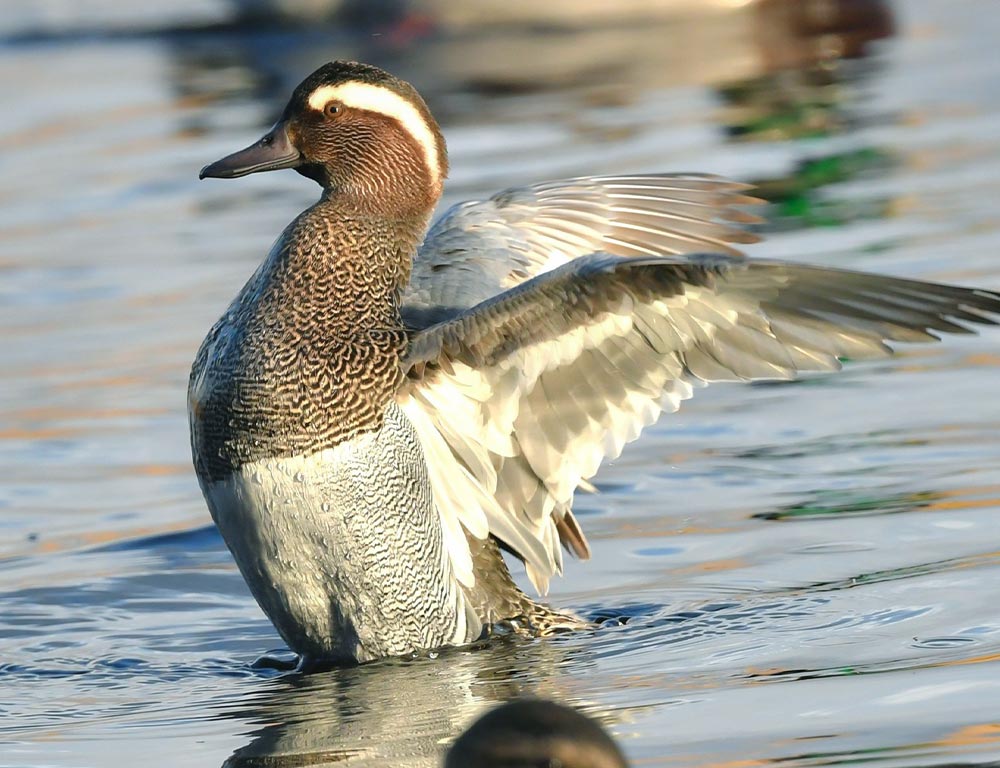
- Scientific Name: Mareca americana
- Life Span: 10-15 years
- Size: 17-23 inches
- Weight: 1-3 pounds
- Food: Herbivorous (grasses, aquatic plants)
- Wingspan: 27-31 inches
- Status: Least Concern
The American Wigeon, known for its distinctive white forehead patch and colorful plumage, is a dabbling duck that frequents Florida’s wetlands.
American Wigeons are highly adaptable, utilizing a variety of wetland habitats for foraging and breeding.
Their wingspan of 27-31 inches supports agile flight, especially during migrations. During the breeding season, males display striking plumage and engage in courtship displays to attract females.
Conservation efforts focused on maintaining the health of wetland ecosystems are crucial for ensuring the continued presence of these graceful dabbling ducks in Florida.
22. Common Eider
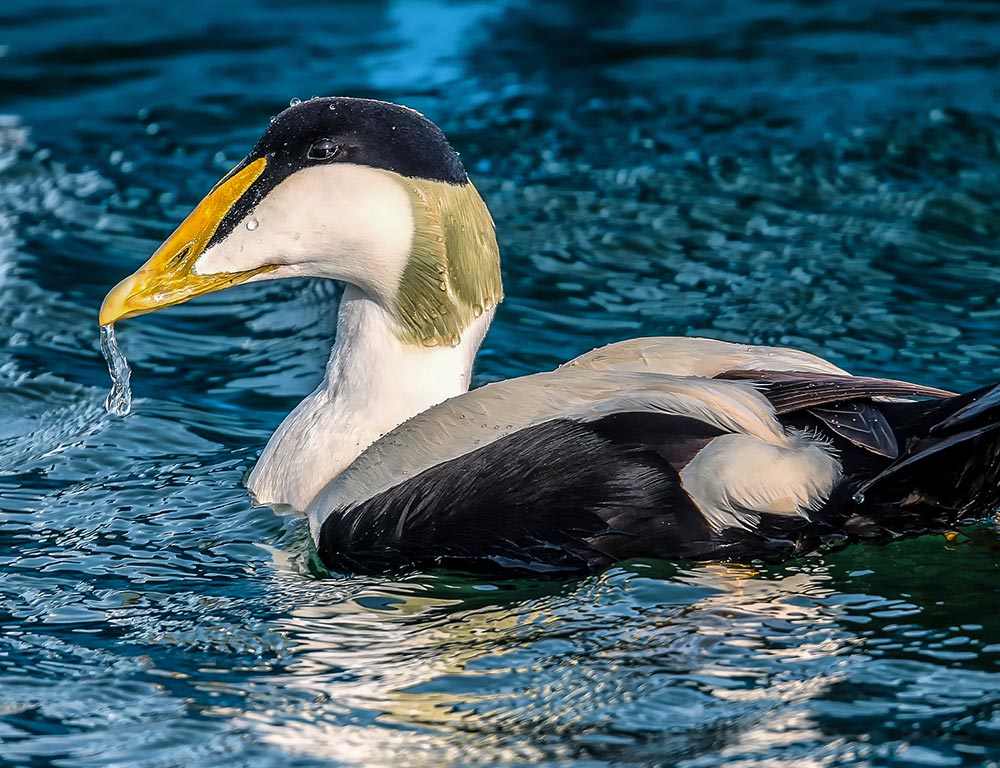
- Scientific Name: Somateria mollissima
- Life Span: 10-20 years
- Size: 20-28 inches
- Weight: 3-5 pounds
- Food: Omnivorous (mollusks, crustaceans, small fish)
- Wingspan: 32-40 inches
- Status: Least Concern
The Common Eider, recognized for its large size and distinctive appearance, is a sea duck that occasionally visits Florida’s coastal waters.
With a life span of 10-20 years, these ducks maintain an omnivorous diet, feeding on mollusks, crustaceans, and small fish.
Common Eiders are renowned for their down feathers, which have been historically harvested for insulation.
Their wingspan of 32-40 inches facilitates powerful flight over open water. These ducks prefer coastal habitats, where they forage and breed in large colonies.
23. Green-winged Teal
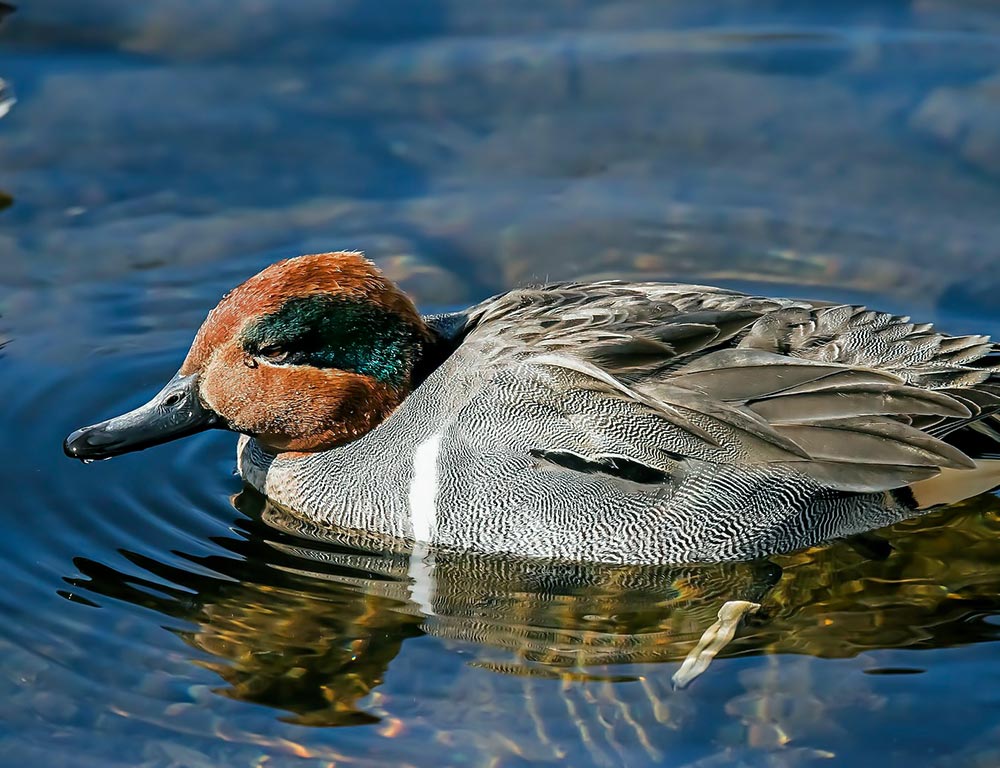
- Scientific Name: Anas crecca
- Life Span: 5-10 years
- Size: 12-16 inches
- Weight: 0.5-1 pound
- Food: Omnivorous (seeds, aquatic invertebrates)
- Wingspan: 20-25 inches
- Status: Least Concern
The Green-winged Teal, distinguished by its vibrant wing markings, is a dabbling duck that frequents Florida’s wetlands. These ducks maintain an omnivorous diet, feeding on seeds and aquatic invertebrates.
Green-winged Teals are characterized by their small size and rapid flight. Their wingspan of 20-25 inches facilitates agile maneuvers, especially during migration.
Conservation efforts focused on protecting both breeding and wintering grounds are crucial for ensuring the continued presence of these delightful ducks in Florida’s diverse ecosystems.
24. Muscovy Duck
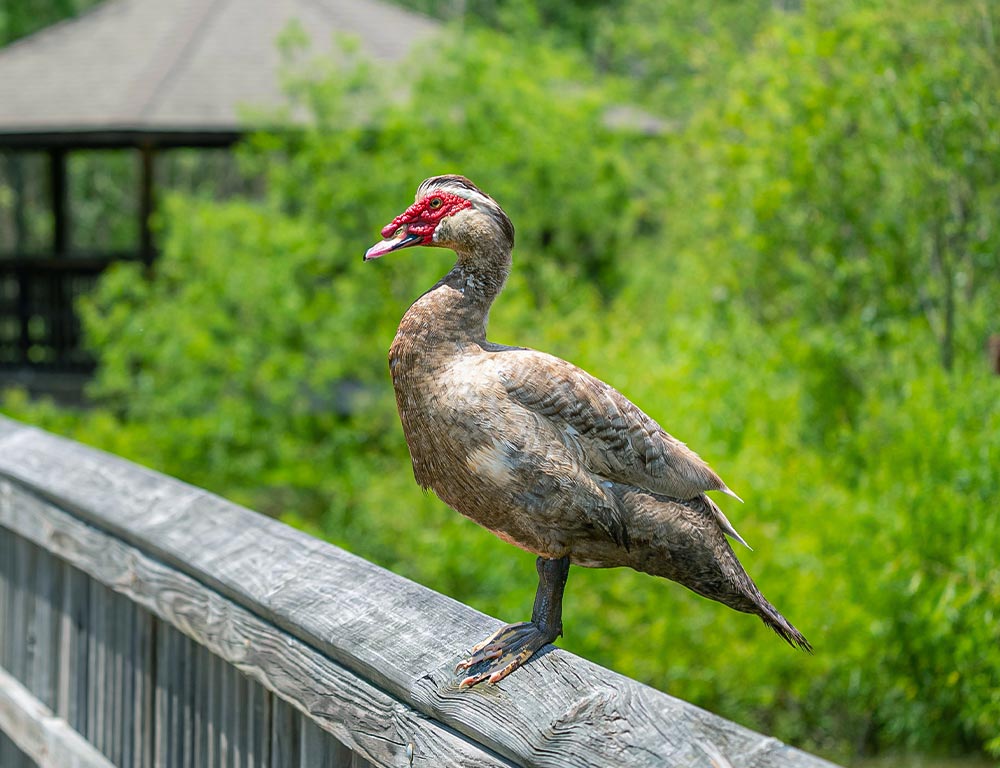
- Scientific Name: Cairina moschata
- Life Span: 8-12 years
- Size: 26-33 inches (length)
- Weight: 6-15 pounds
- Food: Omnivorous (plants, insects, small fish, and crustaceans)
- Wingspan: 54-64 inches
- Status: Domesticated (Wild populations in some areas)
Known for their unique appearance, Muscovy Ducks have a red facial caruncle, a fleshy protuberance, and a preference for tree perching.
Their size ranges from 26 to 33 inches in length, with a substantial weight of 6 to 15 pounds. The wingspan spans between 54 to 64 inches, allowing for graceful and efficient flight.
This adaptability contributes to their success in diverse environments. While domesticated Muscovy Ducks may vary significantly in appearance, wild populations exist in some areas.
Muscovy Ducks are often kept for their pest control abilities, docile nature, and foraging habits. They contribute to the ecological balance of wetland habitats and are a common sight in Florida’s urban and suburban landscapes.
25. White-winged Scoter
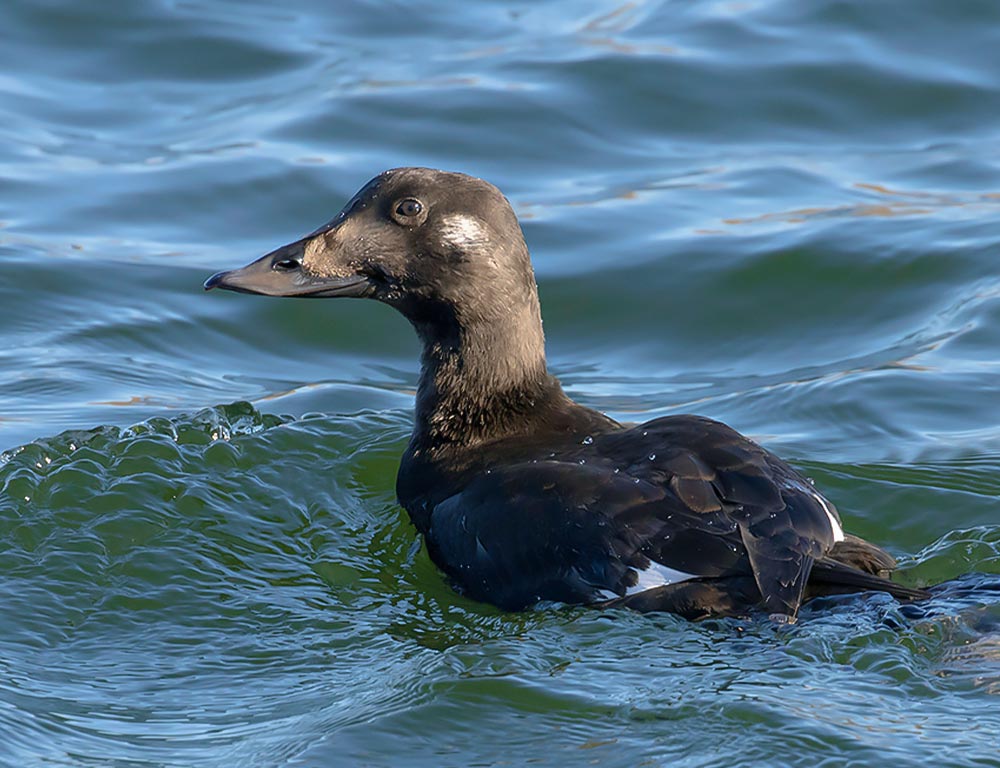
- Scientific Name: Melanitta deglandi
- Life Span: 10-15 years
- Size: 19-22 inches
- Weight: 2-4 pounds
- Food: Omnivorous (mollusks, crustaceans, small fish)
- Wingspan: 31-35 inches
- Status: Least Concern
The White-winged Scoter, a sea duck with distinctive white patches on its wings, occasionally visits Florida’s coastal waters.
With a life span of 10-15 years, these ducks maintain an omnivorous diet, predominantly feeding on mollusks, crustaceans, and small fish.
White-winged Scoters are powerful divers, using their robust wings to navigate beneath the water’s surface.
Their wingspan of 31-35 inches enables strong and steady flight over open waters. During the breeding season, males showcase their striking black plumage and engage in courtship displays to attract mates.
Conservation efforts focused on protecting these crucial environments are vital for ensuring the continued presence of these imposing sea ducks in Florida’s coastal areas.
26. Bufflehead

- Scientific Name: Bucephala albeola
- Life Span: 5-10 years
- Size: 13-16 inches
- Weight: 0.5-1 pound
- Food: Omnivorous (aquatic invertebrates, small fish, seeds)
- Wingspan: 20-23 inches
- Status: Least Concern
The Bufflehead, a small and agile sea duck, is a winter visitor to Florida’s coastal waters and inland lakes. With a life span of 5-10 years, these ducks maintain an omnivorous diet, feeding on aquatic invertebrates, small fish, and seeds.
Buffleheads are known for their striking black and white plumage, with the males featuring an iridescent green and purple sheen. Their compact size and rapid flight make them a delightful sight.
During the breeding season, males engage in energetic courtship displays to attract females. As “Least Concern,” Buffleheads benefit from the preservation of both breeding and wintering habitats.
27. Black Scoter
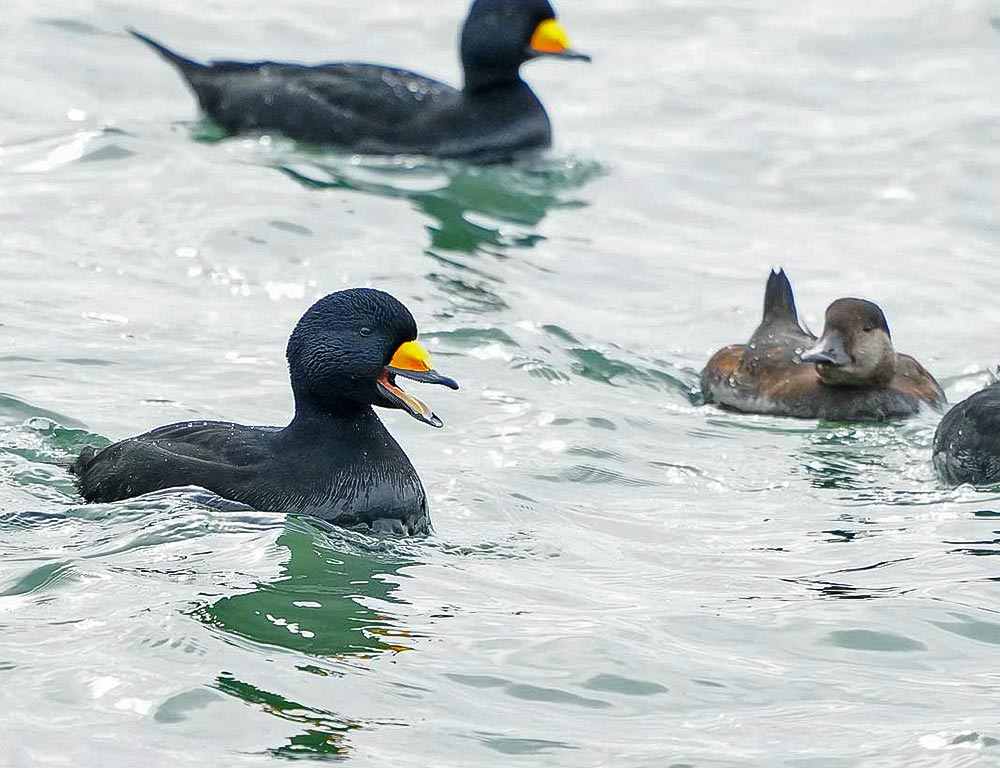
- Scientific Name: Melanitta americana
- Life Span: 10-15 years
- Size: 19-22 inches
- Weight: 2-3 pounds
- Food: Omnivorous (mollusks, crustaceans, small fish)
- Wingspan: 31-35 inches
- Status: Least Concern
The Black Scoter, a sea duck characterized by its dark plumage, is an occasional winter visitor to Florida’s coastal waters. These ducks maintain an omnivorous diet, predominantly feeding on mollusks, crustaceans, and small fish.
Their wingspan of 31-35 inches enables strong and steady flight over open waters. During breeding, males showcase their dark plumage and engage in courtship displays to attract mates.
Conservation efforts focused on protecting these crucial environments are vital for ensuring the continued presence of these imposing sea ducks in Florida’s coastal areas.
Wrapping Up
The presence of 27 duck species in Florida showcases the state’s commitment to preserving diverse ecosystems. These waterfowl contribute to the intricate web of life, symbolizing the delicate balance of nature in Florida’s wetlands and water bodies.
From the Wood Duck’s vibrant colors to the Northern Pintail’s graceful flight, each species plays a unique role in maintaining ecological harmony.
Conservation efforts and habitat preservation are crucial to ensuring the continued thriving of these ducks in the Sunshine State.
As we marvel at their beauty and adaptability, it becomes evident that the coexistence of humans and ducks in Florida reflects a shared responsibility for safeguarding our natural treasures.